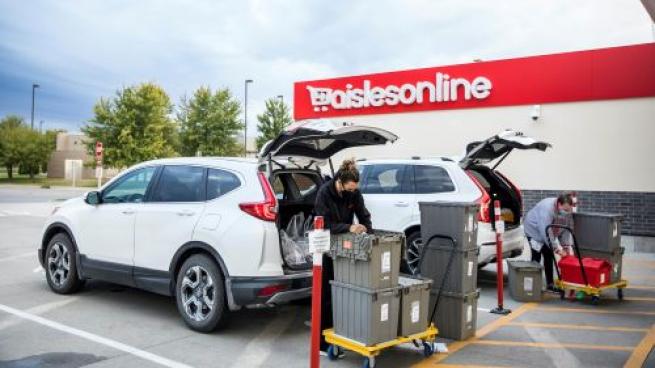The Power of Parking Lots

More Electric Cars
While electric vehicles (EV) aren’t yet cramming highways, they’re becoming a reality. According to Danville, Calif.-based EVAdoption, EVs will represent about 3.4% of new car sales in 2021 and grow to 29.5% by 2030. A key sales driver has been the growing number of EV-charging stations. In 2018, there were 64,000 nationwide, according to the Alternative Fuels Data Center, in Washington, D.C., and Miami-based consulting firm InsideEVs. By 2020, there were about 90,000.
Many major food retailers are offering this service in parking lots. It creates a double revenue stream: the customer pays for the charge and usually shops during the process.
Regency Centers offered EV charging at 50 of its centers in 2019, but that figure has grown to 82, and plans call for further expansion.
“It’s not just for a niche subset,” says Fields. “A retailer may say, ‘That’s not my customer.’ Well, there’s growth in EV.”
Hy-Vee, Walmart, Sam’s Club, Target, Albertsons, Kroger, Publix, Whole Foods Market and Trader Joe’s are among the food and consumables retailers offering EV charging.
Despite the benefits, charging stations and online pickup areas can reduce the number of parking spaces available to shoppers. This can be problematic in small or very busy lots, particularly if employees aren’t parking in allocated areas, or “poachers” from neighboring businesses are using the spaces.
Glide PARCS, a digital tracking system from New Orleans-based Premium Parking, uses a handheld device that automatically scans license plates while an employee strolls the parking lot. A second product, Glide Eye LPR, scans plates at lot entrances and exits. Results allow retailers to identify cars that have overstayed their welcome or are repeatedly parking illegally. The retailer can then enact a corrective action, be it a friendly warning or a less friendly boot or tow. License plate data can even be searched for stolen cars or during Amber Alerts.
“Retailers can identify problems,” asserts Ben Montgomery, president of Premium Parking and board director of the National Parking Association. “People rarely park in handicapped or pregnant-mother parking. The biggest problem is poaching.” Business, he adds, is growing 50% annually. Target is among retailers using the service.
The Whole Picture
Not all parking lot perks directly generate revenue, but they drive traffic. Albertsons established COVID-19 vaccination centers in some lots. For its part, Walmart has long used parking lots for health fairs, festivals and other events. Last summer, when most movie theaters were shuttered due to the pandemic, it partnered with the Tribeca Film Festival to show free drive-in movies in the lots of 160 stores. The family-friendly film lineup included “Friday Night Lights,” “The Karate Kid” and “E.T.”
With consumers spending more time in parking lots, retailers are paying more attention to how lots look from a maintenance, cleanliness and aesthetic perspective.
“A parking lot is the first thing anyone sees,” notes Fields. “Individually, trash cans and planters are no big deal, but all together, everything is a big deal. Now they’re more important.”
progressivegrocer.com

